Consider a closed loop C in a magnetic field, Fig. The flux passing through the loop is defined by choosing a surface whose edge coincides with the loop and using the formula ϕ=B1.dA1+B2.Da2+……..Now if we chose two different surfaces S1 and S2 having C as their edge, would we get the same answer for flux. Justify your answer.
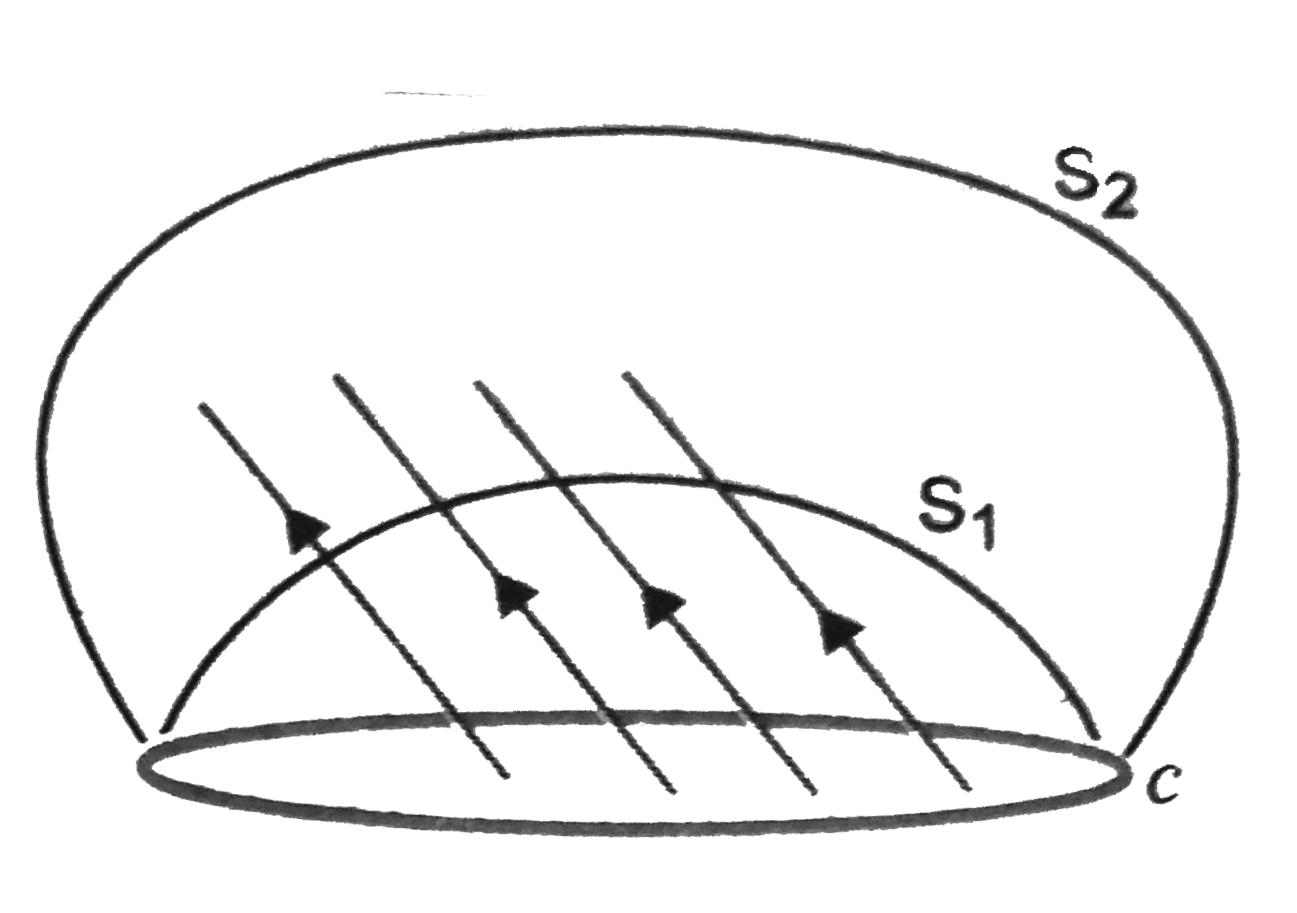
The magnetic flux linked with the surface can considered as the number of magnetic field lines passing through the surface. So, let dϕ=BA represnets magnetic lines in an area A to B.
By the concept of continuity of lines B cannot end or start in space, therefore the number of lines passing through surface S1 must be the same as the number of lines passing through the surface S2. Therefore, in both the cases we gets the same answer for flux.
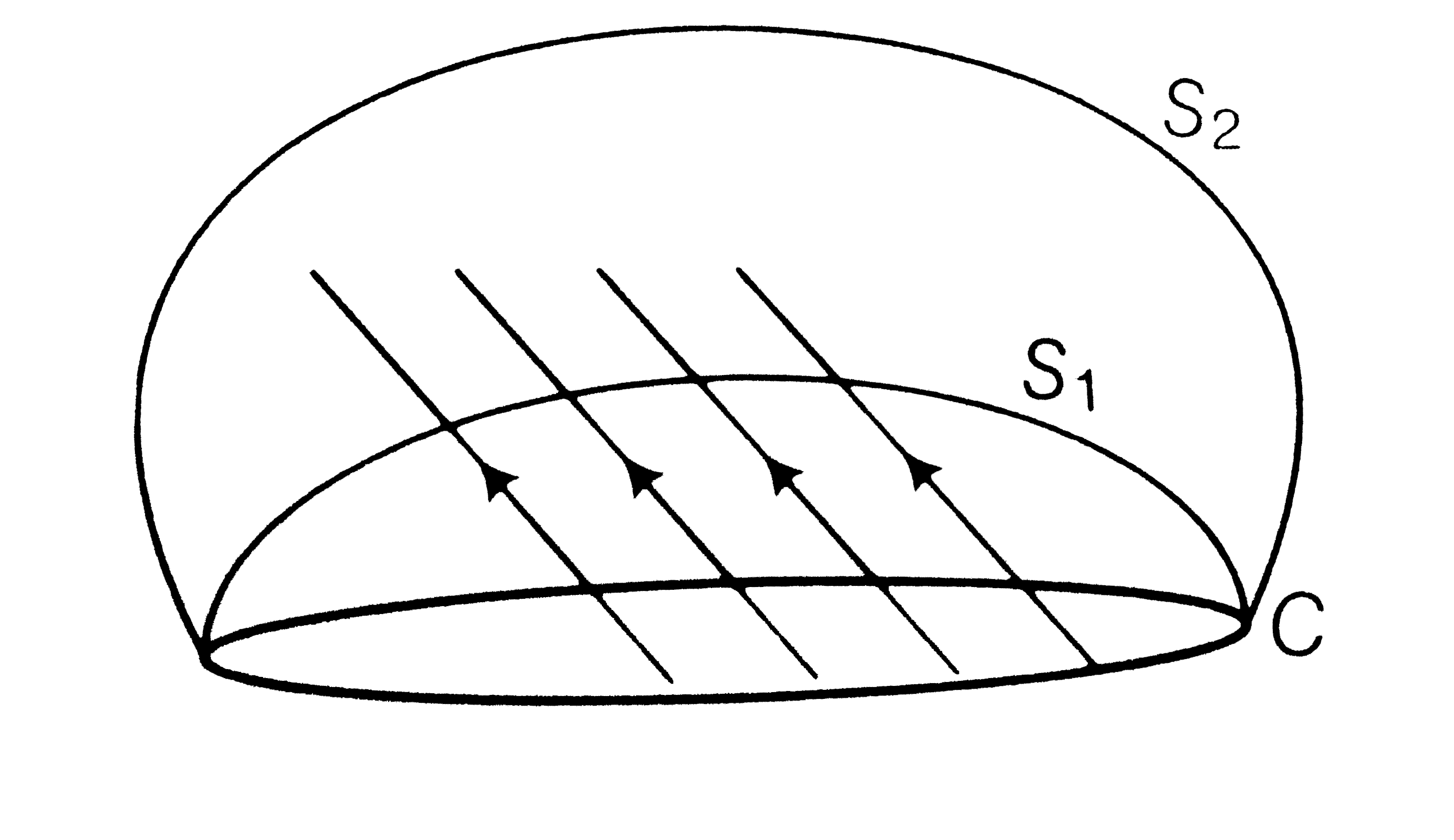
Topper's Solved these Questions
- ELECTROMAGNETIC INDUCTION BOOK - NCERT EXEMPLAR ENGLISHCHAPTER - ELECTROMAGNETIC INDUCTION EXERCISE - Long
11 Videos
- ELECTROMAGNETIC INDUCTION BOOK - NCERT EXEMPLAR ENGLISHCHAPTER - ELECTROMAGNETIC INDUCTION EXERCISE - very short answer
6 Videos
- ELECTRIC CHARGES AND FIELDBOOK - NCERT EXEMPLAR ENGLISHCHAPTER - ELECTRIC CHARGES AND FIELDEXERCISE - Long Answer Type Question
6 Videos
- ELECTROMAGNETIC WAVESBOOK - NCERT EXEMPLAR ENGLISHCHAPTER - ELECTROMAGNETIC WAVESEXERCISE - LONG ANSWER
5 Videos
Similar Questions
Magnetic flux (in Wb) linked with a closed loop varies with time (in S) as Φ =2t^2+1. The magnitude of induced emf at t=1 s is
View SolutionMagnetic flux (in Wb) linked with a closed loop varies with time (in S) as Φ =2t^2+1. The magnitude of induced emf at t=1 s is
View SolutionConsider the hemispherical closed surface as shown in Fig. 3.19. if the hemisphere is a uniform magnetic field that makes an angle θ with the vertical, calculate the magnetic flux
(a) through the flat surface S1.
(b) through the hemisphere surface S2.
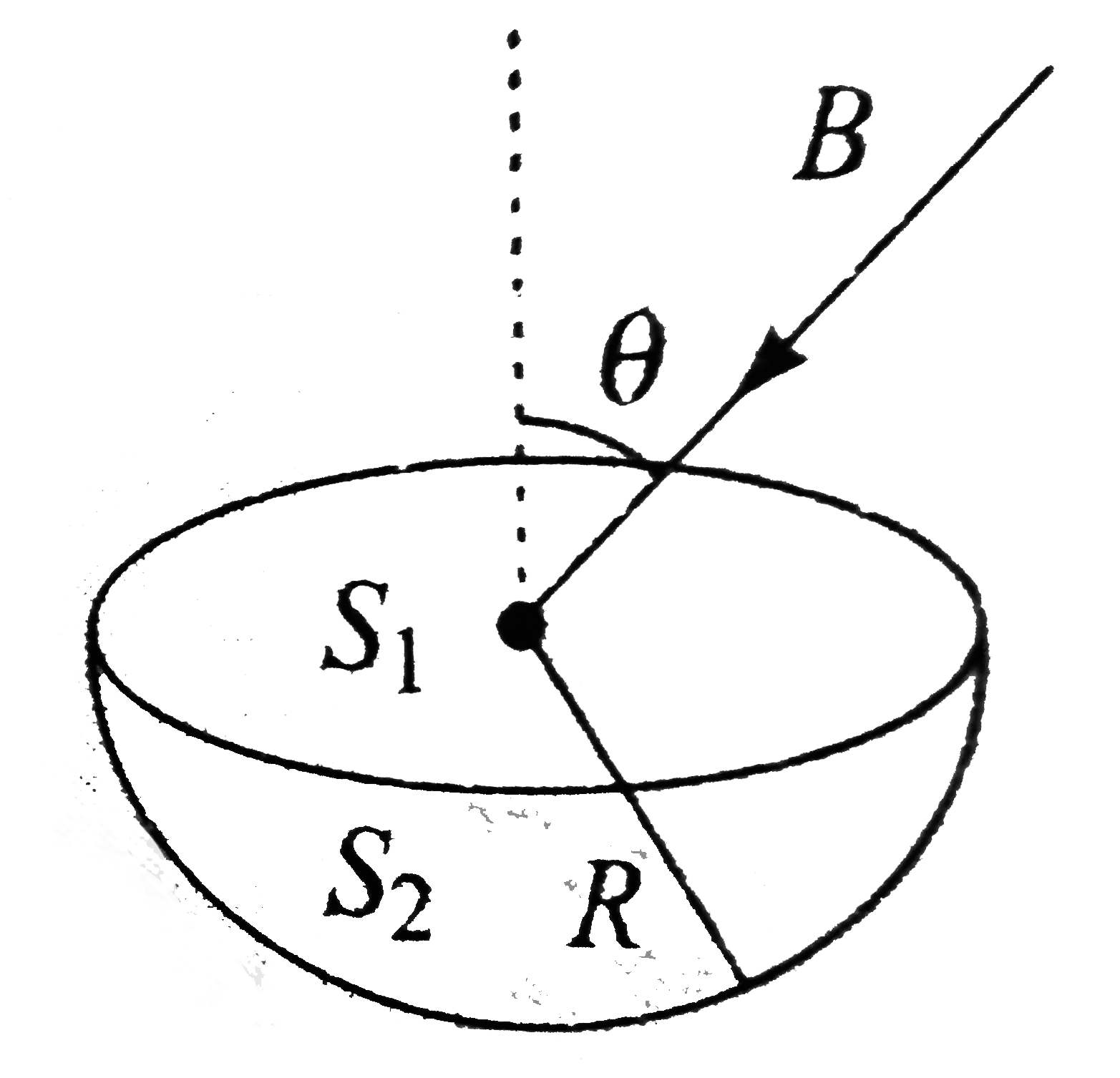
View SolutionThe magnetic flux across a loop of resistance 10Ω is given by ϕ=5t2−4t+1Wb. How much current is induced in the loop after 0.2 s?
View SolutionA square non - conducting loop , 20 cm , on a side is placed in a magnetic field . The centre of side AB coincides with the centre of magnetic field . The magnetic field is increasing at the rate 2 T /s . The potential difference betweeen B and C is :

View SolutionConsider a closed surface of arbitatry shape as shown in figure. Suppose a single charge Q1 is located at some point within the surface and second charge Q2 is located outside the surface.
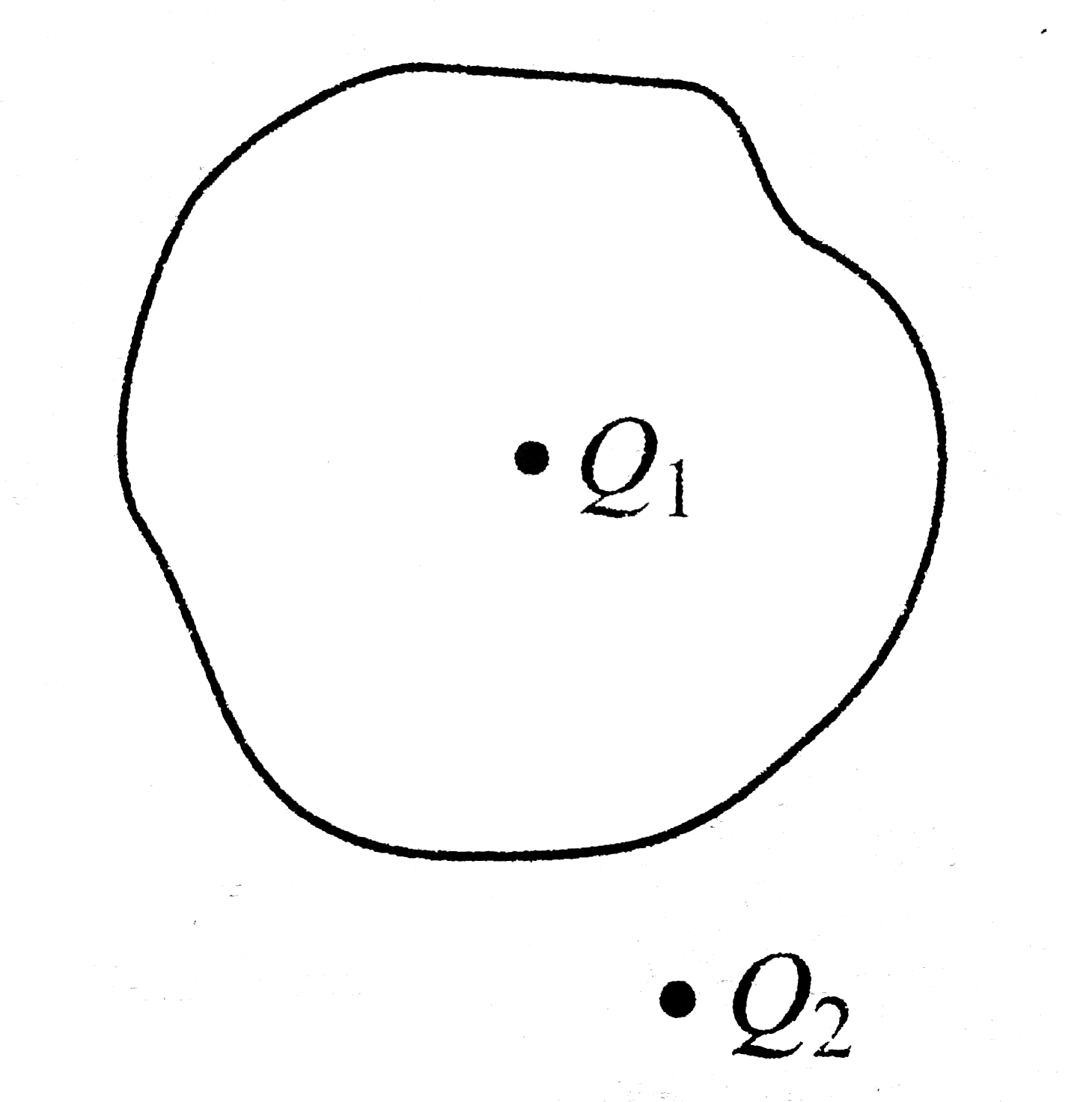
a. What is the total flux passing through the surface due to charge Q1?
b. What is the total flux passing through the surface due to charge Q2?
View SolutionFigure shows four charges q1,q2,q3,andq4 fixed is space. Then the total flux of the electric field through a closed surface S, due to all the charges, is
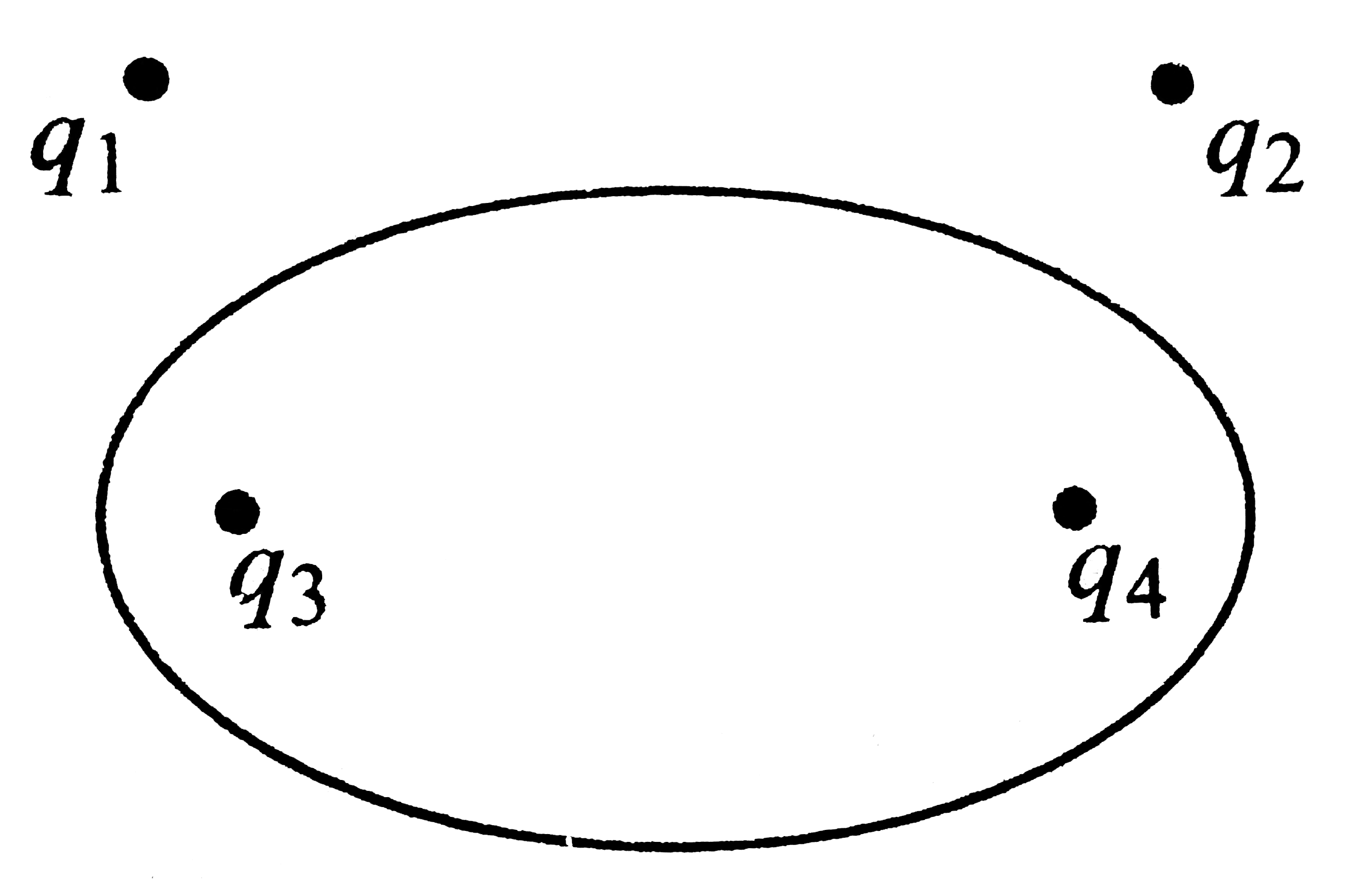
View SolutionThe flux of magnetic field through a closed conducting loop changes with time according to the equation, Phi = at^2 + bt+ c. (a) Write the SI units of a,b and c. (b) if the magnitudes of a,b and c are 0.20, 0.40 and 0.60 respectely, find the induced emf at t = 2 s.
View SolutionThe current through the solenoid is changing in such way that flux through it is given by ϕ=εt The solenoid is surrounded by a loop having resistance R1andR2 as shown. Then the reading the two voltmeters V1andV2 differ by :
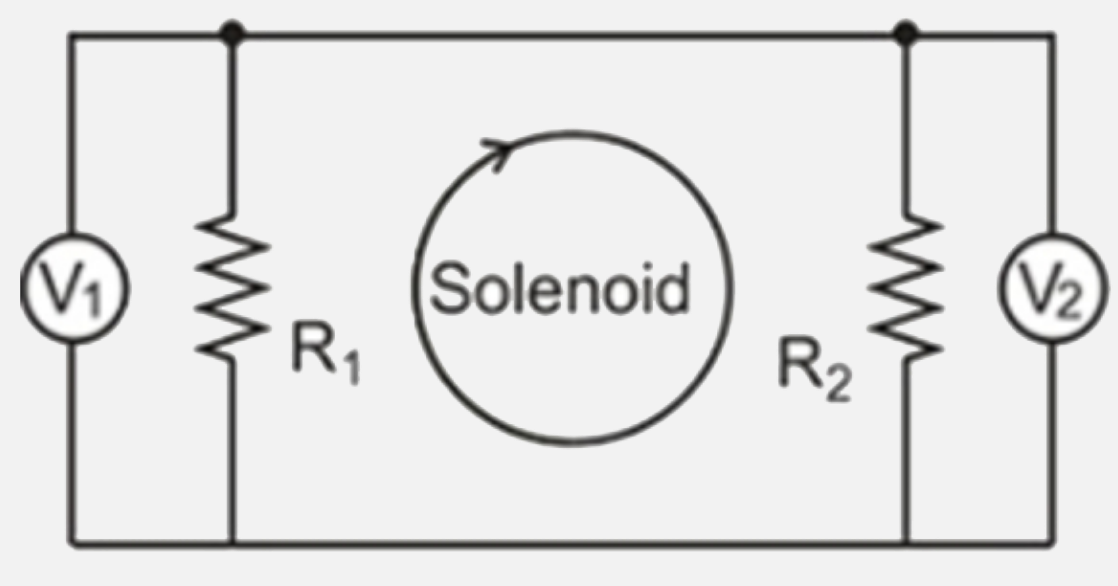
View SolutionAn electric field →E=4xˆi−(y2+1)ˆjN/C passes through the box shown in figure. The flux of the electric field through surface ABCD and BCGF are marked as ϕ1andϕ2 respectively. The difference between (ϕ1−ϕ2) is in Nm2/C)
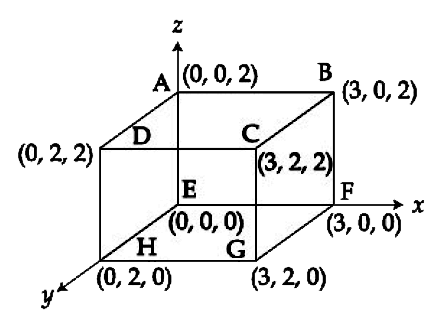
View Solution
